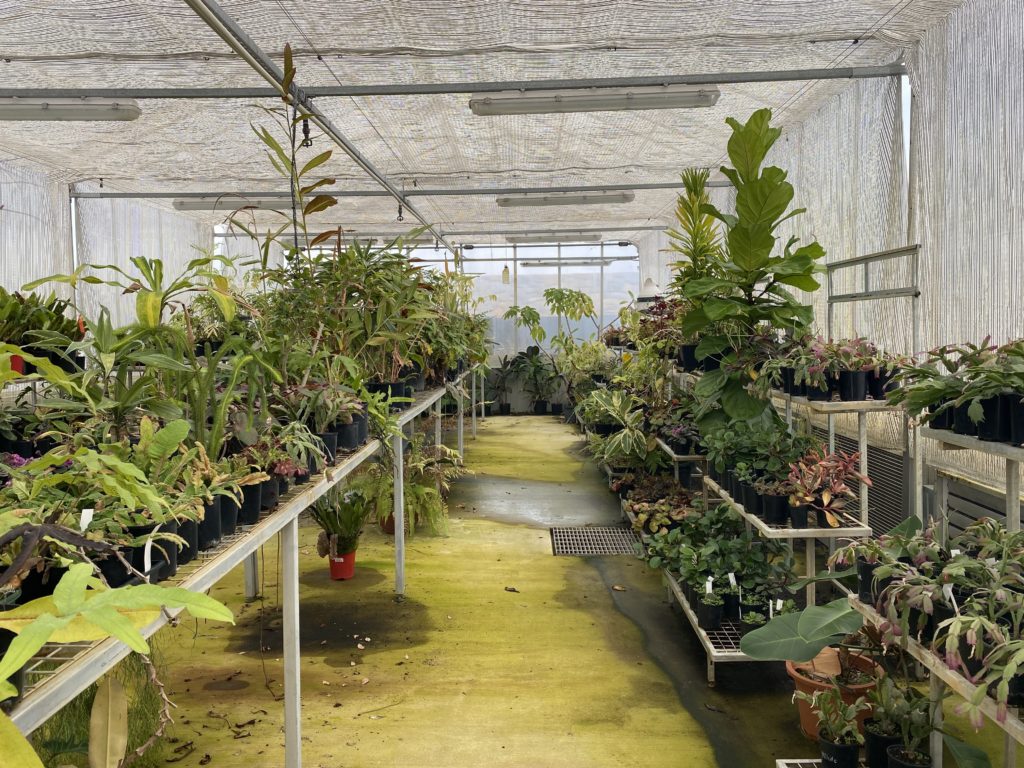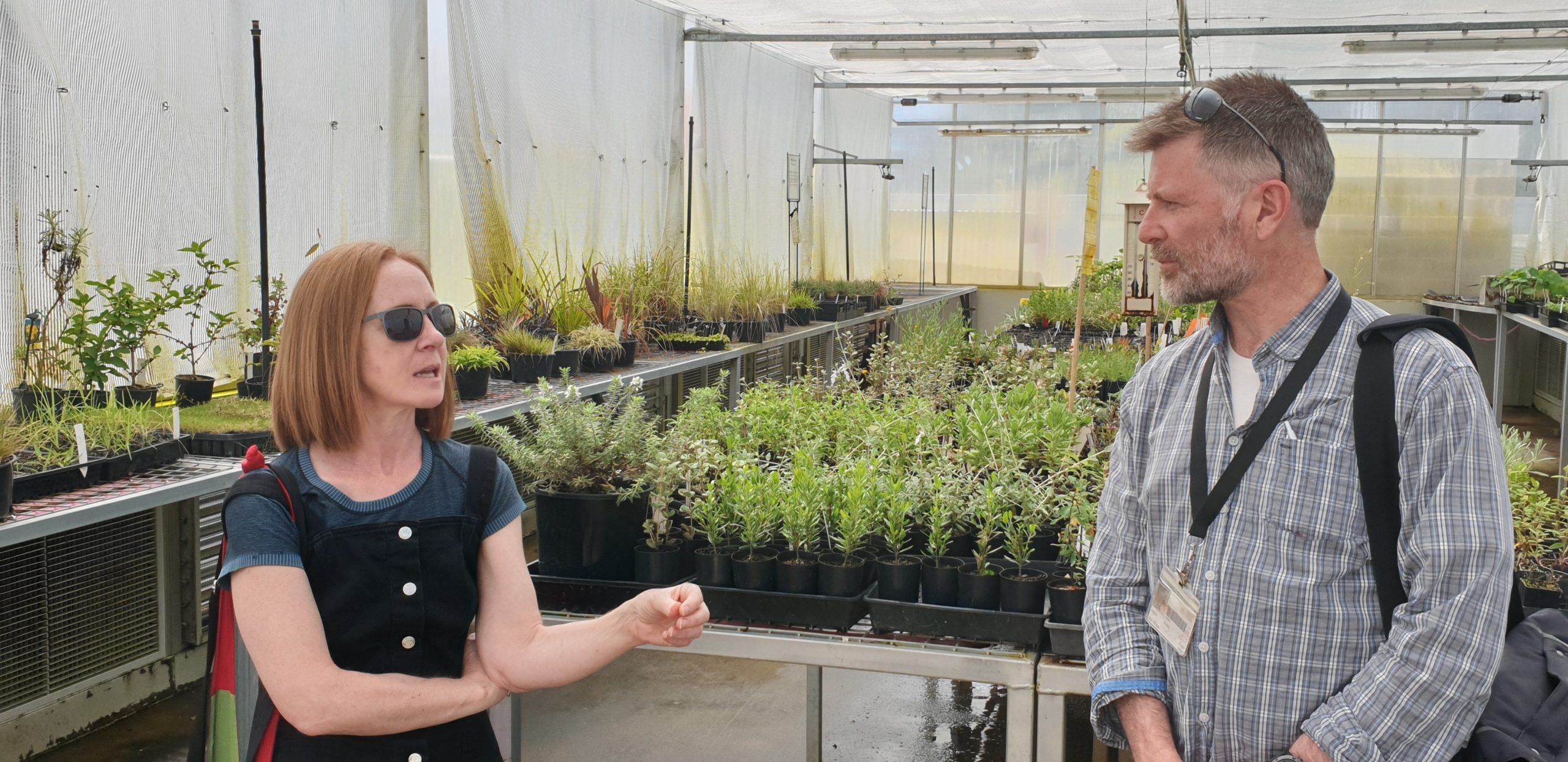An update from Professor Owen Atkin, CEAT Director
As many of you know, the Centre for Entrepreneurial Agri-Technology is located in the National Agricultural & Environmental Sciences Precinct at the interface of ANU and the Black Mountain campus of CSIRO. The Precinct is an outstanding plant and agricultural sciences knowledge cluster – one that includes the University’s superior research capability in plant, environmental and computer sciences, robotics, economics, social sciences and policy, as well as CSIRO’s translation capacity in the agriculture/food industries and strong partnerships with large corporations. The Precinct provides an extraordinary environment for students and researchers interested in addressing agricultural and food-security challenges.
Being in Canberra, the Precinct is just a 15 min drive to Parliament House where researchers regularly meet with decision makers, through events such as Science meets Parliament and representations to House and Senate Inquiries. An example of the latter is the recent interview of Barry Pogson, Ulrike Mathesius and Jennie Mallela by the Senate inquiry into farm practices that impact water quality outcomes in the Great Barrier Reef. The Precinct is also close to several relevant Australian Government agencies (e.g. Australian Centre for International Agricultural Research and the Australian Bureau of Agricultural and Resource Economics), and Government departments (e.g. Agriculture, Water & Environment; Foreign Affairs & Trade; Industry & Science; Infrastructure). The Rural Research Development Corporations are well represented in Canberra, as are industry representatives and peak bodies such as the National Farmers Federation and CropLife Australia.
Location matters – particularly for organisations who need to network, influence and exchange information with government and industry organisations. For this reason, the Precinct in Canberra is an ideal home for companies seeking to grow their business across Australia.
The Precinct is also close to the National Press Club – a place many of you will have seen on the news when decision-makers and influencers give speeches and/or engage in debate. For the Precinct community, the Club provides fantastic opportunities to be take part – first hand – in public discourse events of relevance to the future of agriculture, technology and innovation. An example is the recent launch of the Official Australian Reference Guide to Agricultural Biotechnology and GM Crops by Ken Matthews AO, Chairman of the Agricultural Biotechnology Council of Australia. The Reference Guide is a great resource for information on the science of genetic modifications and how that technology is being applied in crops. You can watch the launch here.
Dr Caitlin Byrt, a world-leading researcher from the ANU working on engineering plant membrane proteins and solute transport to increase crop yields spoke at the launch. Caitlin provided a fantastic overview of how humans – over several thousand years – have altered the genetic makeup of the crops upon which we now rely. While acknowledging the importance of traditional crop breeding for improving crop yields, Caitlin highlighted how agricultural biotechnology – through development of genetically modified and genome edited plants – can help us accelerate the incorporation of new traits into our leading crops. GM technology has the potential to greatly increase crop nutritional quality, disease resistance and climate resilience.
Just days after Caitlin gave her speech came the announcement that another major wheat producing country, Argentina, would be the first country to approve use of HB4 drought-resistant GM wheat. It will be interesting to see how this development influences debate about the use of GM technology in our cereal grain industry. Coincidently, Caitlin’s speech also came just days before the announcement that the Nobel Prize in Chemistry 2020 was awarded to Emmanuelle Charpentier and Jennifer Doudna for their work to advance precise CRISPR genome-editing. You can find a recent review on applications of CRISPR in agriculture and plant biotechnology here.
A few days after the Guide launch, the Press Club hosted a debate between the Minister for Agriculture, Drought and Emergency Management, the Hon. David Littleproud, and the Shadow Minister, the Hon. Joel Fitzgibbon. I attended last year’s debate (but not this year’s) and was struck by the extent to which there was agreement between Littleproud and Fitzgibbon on the future of agriculture in Australia. Caitlin attended the recent event, as did Denise Higgins from the CEAT team. Denise has played a critical role in the development of CEAT, and is responsible for strategic planning and for documenting the impact of our programs. As is often the case at Press Club events, new connections were made, with Denise meeting Rohan Rainbow (Managing Director, Crop Protection Australia).
I asked each of them – Caitlin, Denise and Rohan – what they took home from the debate. Caitlin noted the fact that while there many references to the need for innovation to support the future of Australian agriculture (including jobs), there was little discussion around how to support the research and associated jobs needed to drive innovation in Australian Agriculture. Given the chance, Caitlin would have asked Littleproud and Fitzgibbon which factors they rank as most important in relation to ensuring Australia reaches the target of growing Australian agriculture to $100 billion by 2030.
Denise noted that Australia’s trade relationship with China was one of the few contested points of difference between Littleproud and Fitzgibbon, with Fitzgibbon arguing for a stronger role of government in managing trade between the two countries, whereas Littleproud saw a stronger role for exporters in managing the type of products exported to China.
For Rohan, the debate highlighted how having an understanding of science is critical to the development of good policy and good decision-making, particularly for decision-makers holding the responsibility for the agriculture portfolio. He felt that both the Minister and Shadow Minister have passionate visions for agriculture for this country – something that is good to see in our national leaders.
In addition to being close to government etc., the Precinct is also only 6 km from the Bruce Campus of the Canberra Institute of Technology, home to a range of horticulture facilities and a place where apprentices receive training in the latest approaches to plant propagation and management. Last week, Jayne Miller and Luke Endrulis from CIT kindly showed a few of the CEAT team their facilities, including several climate-controlled glasshouses. CIT is keen to collaborate with Precinct researchers and students, and would also welcome links to start-ups or established companies needing access to plant growth facilities in the Canberra region.

Climate-controlled glass house at CIT Bruce campus. 
Assortment of plants in CIT glass house. 
Owen Atkin with Jayne Miller.
Another education provider in nearby Bruce is the University of Canberra – home to the Institute of Applied Ecology and Centre for Applied Water Science (CAWS). Both generate research of high relevance to the agricultural sector, particularly with respect to water management. As some of you may know, CEAT co-hosted the H2O Hack event with CAWS earlier this year. The Centre Director, Professor Ross Thompson proved to be a fantastic collaborator on what was a very successful event. While on the topic of H2O Hack, it was great to hear this week that the winning team – ‘AquaporInSolutions for a water smart agrifood sector’ was recently announced as a finalist in the Research Stream of the Bridge Hub 2020 Water Challenge, the winner of which will be announced on 30 October.
Finally, it was great to see Dr Liang Zheng (ANU College of Computer Science and Engineering) – one of the researchers working on the CEAT-initiated industry project targeting plant-based vaccine development (with Canadian-based Medicago R&D Inc) – recently named as one of the five ‘rising stars’ in Engineering & Computer Sciences as part of The Australian’s Early Achievers Leaderboard. The Leaderboard is made of top researchers from Australian universities and research institutions in each of the eight major discipline areas, who are less than 10 years into their career. Congratulations Liang.
For information and updates on CEAT activities, programs and other initiatives, please subscribe to our newsletter to receive a monthly update directly to your email.
Thank you.
Owen Atkin, Director, CEAT.
